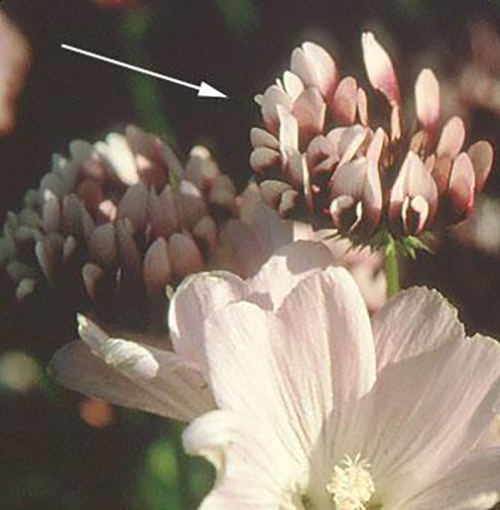White-tipped Clover is a member of the pea family. Each flower is made up of five unusually shaped petals. The top petal is the banner petal and often has a contrasting color. The two side petals are alike and are called the wing petals. The lower two petals are joined into a single boat-shaped petal called the keel petal. The flowers are deep purple with white or pale pink tips.
White-tipped Clover is the only native perennial (not dying off each year) clover at Mather Field. It grows in large clumps and each plant has many flowers. White-tipped Clover often occurs with Checkerbloom (Sidalcea calycosa).
Scientific name: Trifolium variegatum
Family: Fabaceae (pea)
Habitat: Vernal pools, wet grasslands
Size: Plant 8 to 14 inches tall, flower 1.5 to 2.0 cm
Fun Facts:
Native clovers are a good source of nectar and attract a variety of native and non-native bees.
Life Cycle:
White-tipped Clover is a short-lived perennial and generally only lives a few years. The plants die back during the summer and then re-sprout from the complex root system when the rains arrive in the fall. White-tipped Clover begins blooming in April as the pools begin to dry, but may continue to bloom into May.
Ecology:
Clover flowers are very high in nectar and attract a variety of bees and other insects. Clover honey is very tasty and highly nutritious.
Investigate:
The Checkerbloom and White-tipped Clover grow together, bloom at the same time, and have similar colored flowers. Watch to see if the same pollinators visit both flowers? White-tipped Clover has a delightful perfume. Find a patch and sniff the air for its scent on a warm day.
